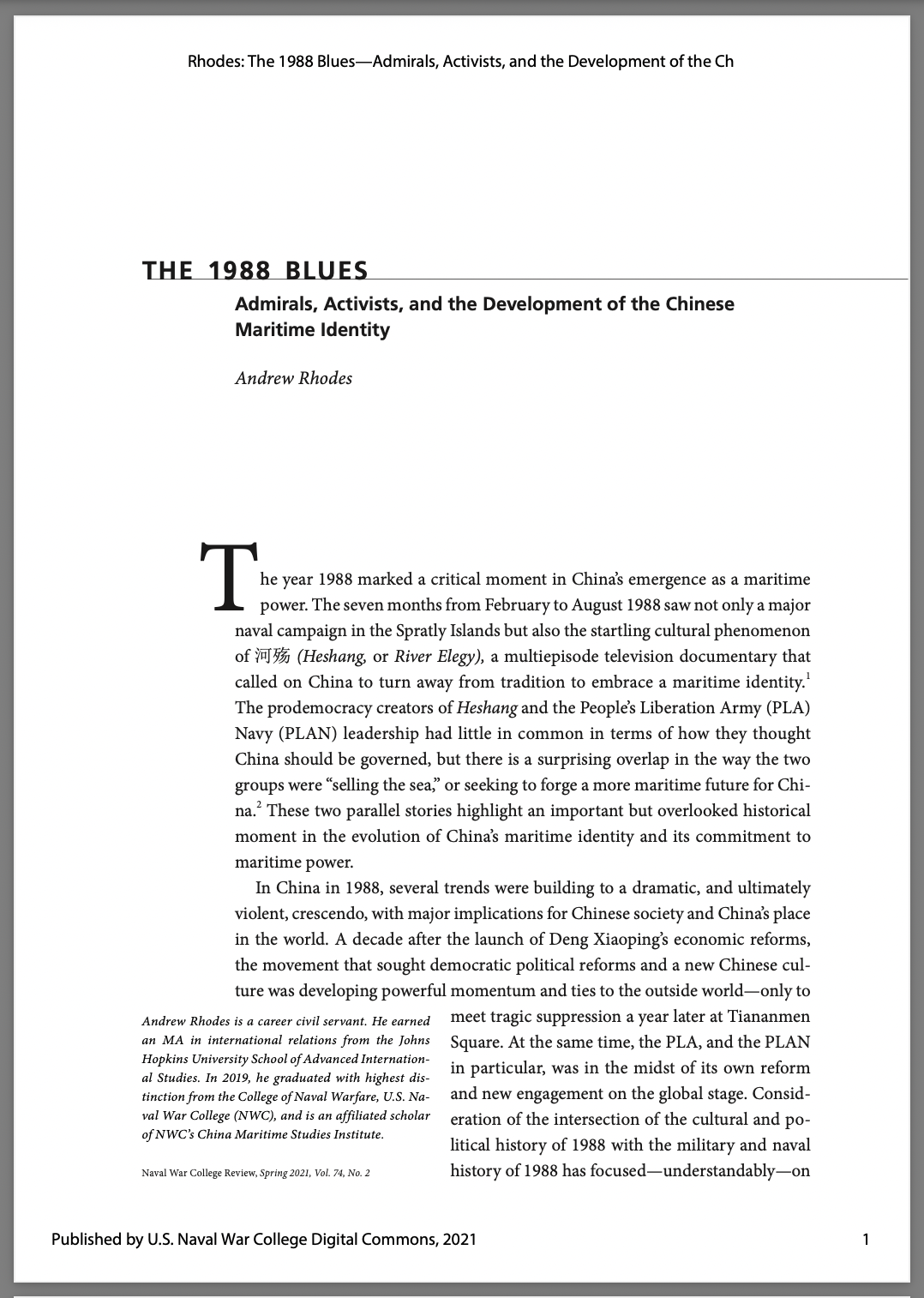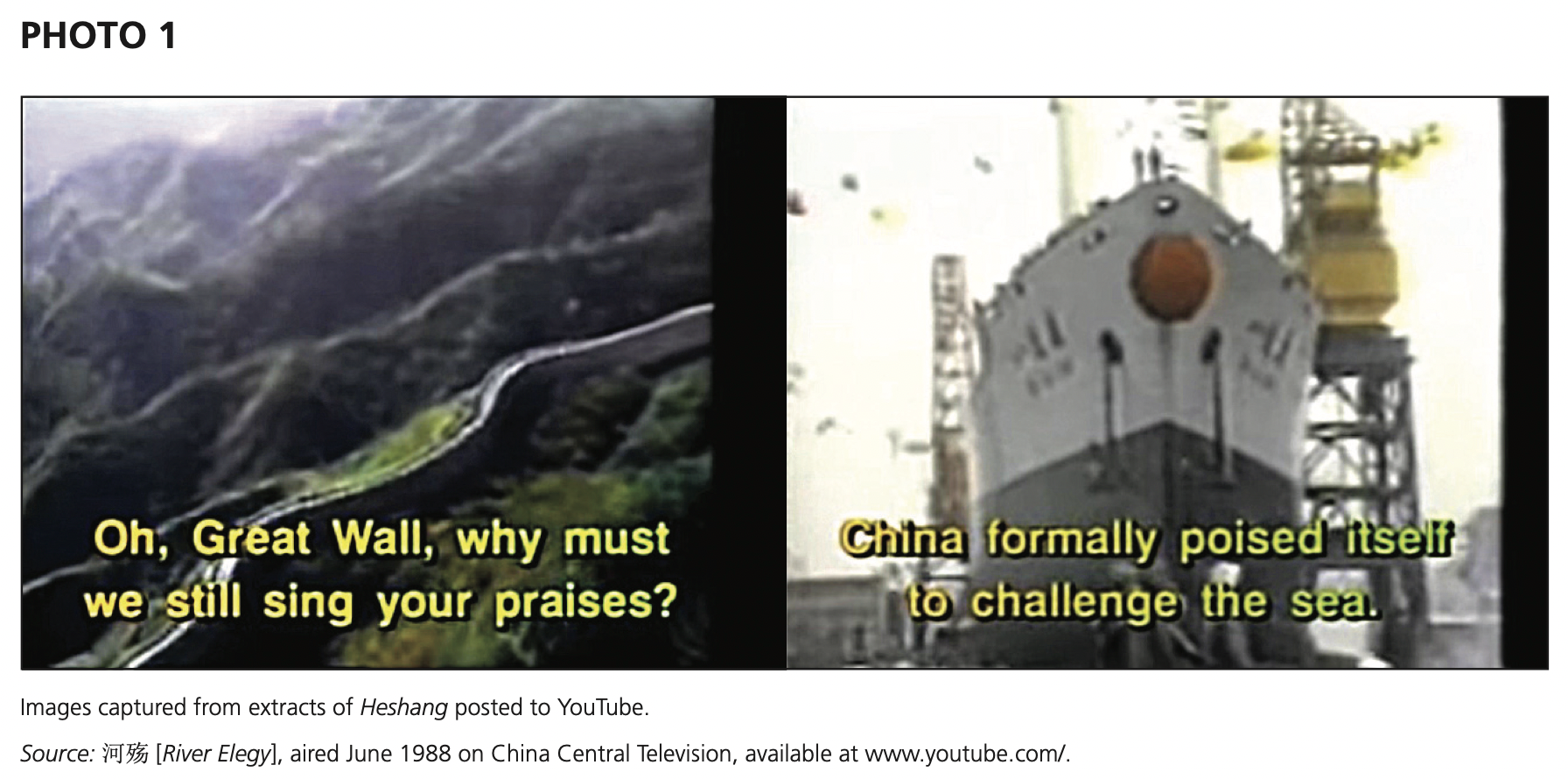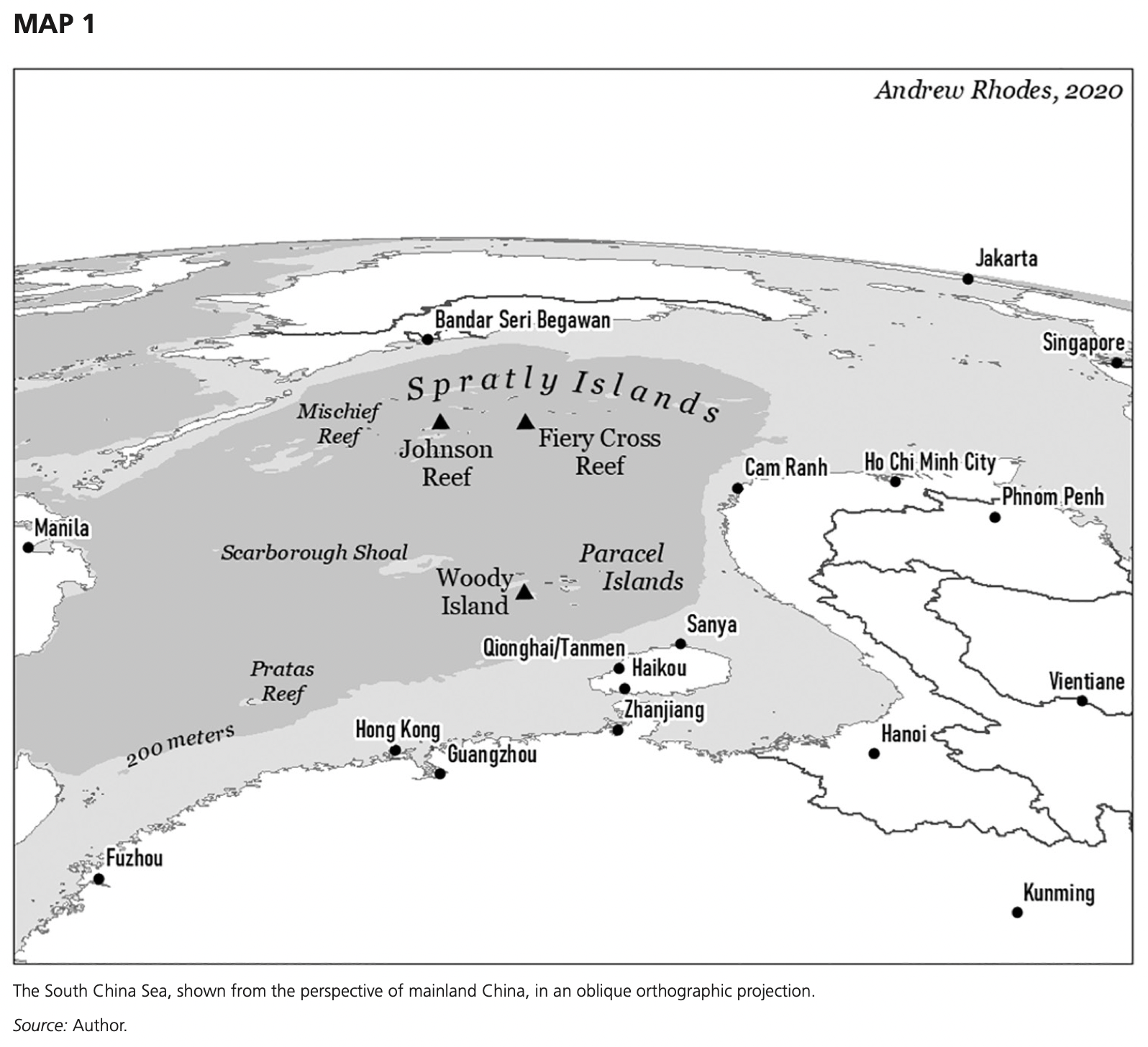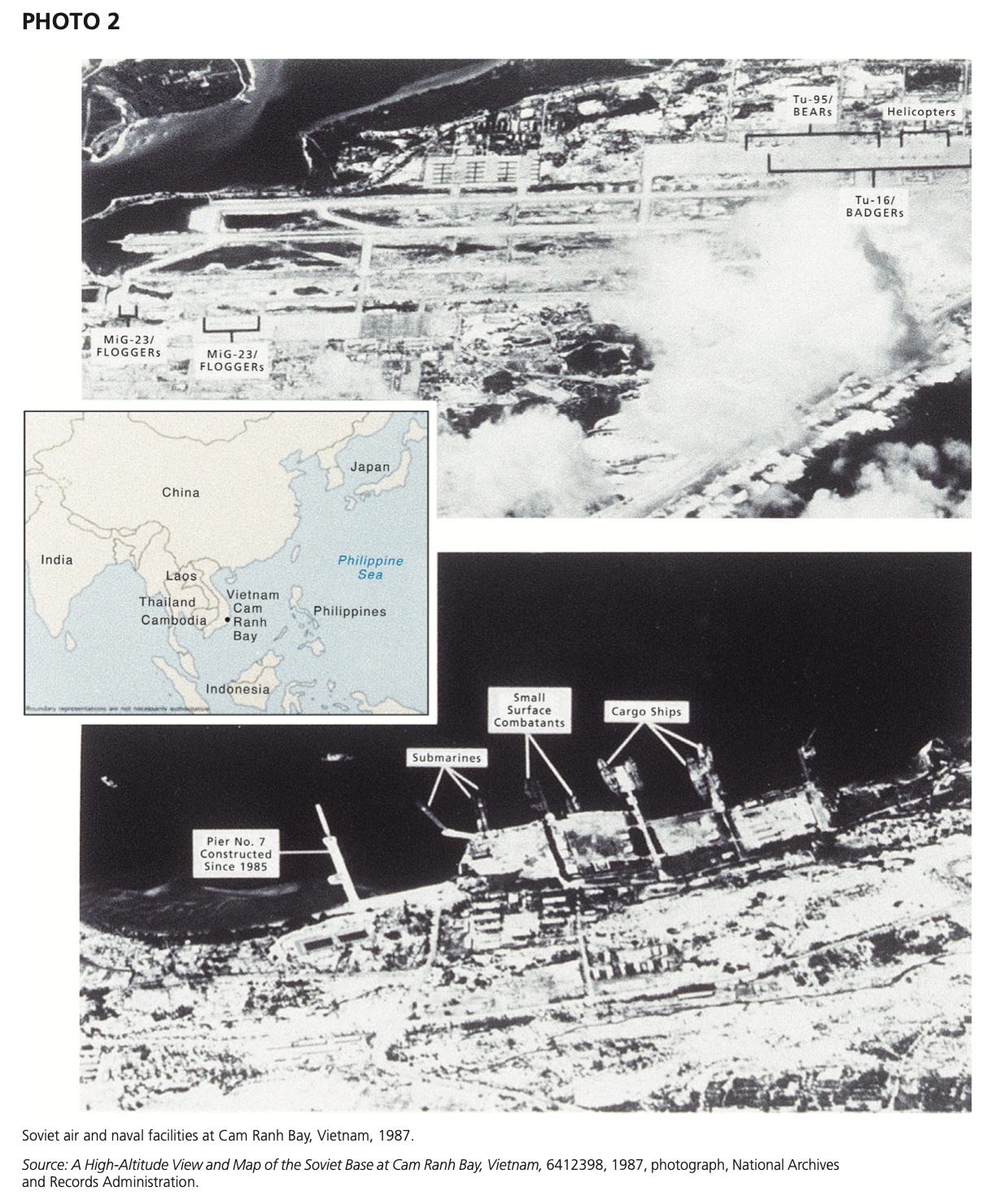The 1988 Blues—Admirals, Activists, and the Development of the Chinese Maritime Identity
Fascinating new Naval War College Review article by NWC highest-distinction grad & China Maritime Studies Institute affiliate Andrew Rhodes! Innovative interdisciplinary insights…
Andrew Rhodes, “The 1988 Blues—Admirals, Activists, and the Development of the Chinese Maritime Identity,” Naval War College Review 74.2 (Spring 2021): 61–79.
This article captures the nexus of culture and strategy in describing a key moment in the development of Chinese sea power. In the late 1980s, pro-democracy activists and the PLA were on divergent political paths, but both embraced similar language and concepts about the importance of the global maritime system. The parallel 1988 stories of the television documentary Heshang and the Navy’s campaign to occupy the Spratlys offer key insights into understanding China’s path to becoming a maritime power.
Andrew Rhodes is a career civil servant. He earned an M.A. in international relations from the Johns Hopkins University School of Advanced International Studies. In 2019, he graduated with highest distinction from the College of Naval Warfare, U.S. Naval War College (NWC), and is an affiliated scholar of NWC’s China Maritime Studies Institute.
Abstract
In 1988, the views of the prodemocracy creators of a popular documentary had little in common with the PLAN leadership’s views regarding China’s governance, but there is surprising overlap in the way the two groups were “selling the sea,” helping to explain a critical moment in the evolution of China’s maritime identity and commitment to maritime power.
Text of Article
The year 1988 marked a critical moment in China’s emergence as a maritime power. The seven months from February to August 1988 saw not only a major naval campaign in the Spratly Islands but also the startling cultural phenomenon of 河殇 (Heshang, or River Elegy), a multi-episode television documentary that called on China to turn away from tradition to embrace a maritime identity.1 The prodemocracy creators of Heshang and the People’s Liberation Army (PLA) Navy (PLAN) leadership had little in common in terms of how they thought China should be governed, but there is a surprising overlap in the way the two groups were “selling the sea,” or seeking to forge a more maritime future for China.2 These two parallel stories highlight an important but overlooked historical moment in the evolution of China’s maritime identity and its commitment to maritime power.
In China in 1988, several trends were building to a dramatic, and ultimately violent, crescendo, with major implications for Chinese society and China’s place in the world. A decade after the launch of Deng Xiaoping’s economic reforms, the movement that sought democratic political reforms and a new Chinese culture was developing powerful momentum and ties to the outside world—only to meet tragic suppression a year later at Tiananmen Square. At the same time, the PLA, and the PLAN in particular, was in the midst of its own reform and new engagement on the global stage. Consideration of the intersection of the cultural and political history of 1988 with the military and naval history of 1988 has focused—understandably—on the path to June 1989. But there are intriguing parallels, beyond mere coincidence, in the cultural and naval events of the spring and summer of 1988 that provide a new lens for viewing the relationship between Chinese culture and Chinese sea power.
Thirty-two years is not long in the grand sweep of naval history or Chinese history, but the rapid pace of PLAN development in the twenty-first century makes 1988 seem rather like the ancient past. The late 1980s are within the living memory of many scholars and strategists, but too few remember the events of 1988 and the global, regional, and national context in which they took place. For most Americans, the China of 1988 hides behind two veils—the Tiananmen Square massacre and the end of the Cold War—that obscure our view of important historical trends. Many of the key trends the world confronts today grew from seeds that already were germinating, in very recognizable ways, in 1988. A closer examination of 1988 suggests, for example, that the campaign begun in 2014 to build artificial islands in the Spratly Islands had unprecedented scope but emerged from actions driven by the “maritime mentality” and specific naval actions of 1988.3 Revisiting Heshang reveals how PLA leaders in the Xi Jinping era have echoed the language of 1988’s prodemocracy activists. The PLAN commander in 2014 wrote that China had suffered in the past because it “clung to the traditional thinking of valuing the land and neglecting the sea,” while the 2015 defense white paper called for China to abandon the “traditional mentality that land outweighs sea.”4
The next section of this article briefly will review key concepts in the literature on maritime identity and sea power, and will suggest taking a nuanced view of China’s evolution from a continental power to a more maritime power. Following this theory section, the two subsequent sections will explore the cultural dimensions and historical context in which Heshang emerged and the strategic context of the 1988 naval campaign. The final portions of the article will examine the interaction of these cultural and naval events, and how such a consideration enriches our understanding of China’s maritime identity. The article will conclude by arguing that the events of 1988 offer clear evidence that China’s commitment to sea power has been well under way for more than three decades, and has built on a surprisingly diverse basis of support over that period. … … …









































